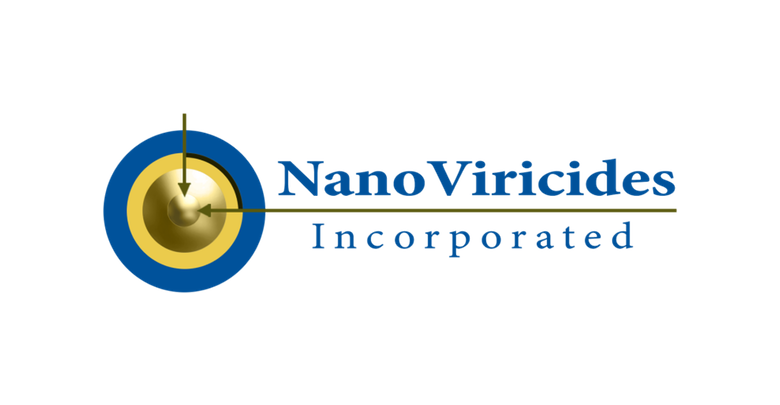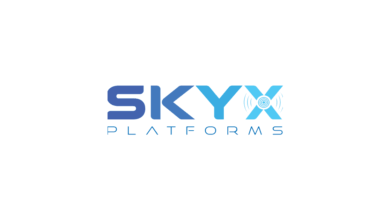NanoViricides Provides Additional Details on Its Rapid Monkeypox Drug Strategy

SHELTON, CONNECTICUT — August 9, 2022 — NanoViricides, Inc. (NYSE American: NNVC) (the “Company”), a global leader in the development of highly effective antiviral therapies based on a novel nanomedicines platform, provides further details on its rapid drug development strategy for Monkeypox virus.
The Company believes its Monkeypox drug development program should reach the clinic in a much shorter timespan compared to its NV-CoV-2 drug for treating COVID-19 SARS-CoV-2 virus infection. To achieve this, the Company intends to ride on the pre-clinical development performed during its NV-CoV-2 drug development program, as explained below. With this strategy the Company expects to make an effective drug for Monkeypox virus treatment available very rapidly.
The Monkeypox outbreak was declared a “Public Health Emergency” by the Biden Administration on Thursday, August 4, 2022 (https://www.politico.com/news/2022/08/04/biden-administration-plans-public-health-monkeypox-00049831 ). The Company believes this declaration will result in expedited FDA protocols such as the Expanded Access -IND (which the FDA has already made available) and Emergency Use Authorization becoming available to Monkeypox drug development.
The first and quick drug the Company intends to develop is NV-387-T, which is made by encapsulation within NV-387 polymeric micelles of Tecovirimat. Tecovirimat is the active ingredient of TPOXX® (SIGA) and is currently in use for Monkeypox virus treatment. TPOXX is approved under the “Animal Rule” authority of the US FDA for treating smallpox virus, but not for monkeypox virus.
NV-387-T is expected to become the only drug available for monkeypox patients with kidney damage, a group in which TPOXX® (SIGA) cannot be used.
Additionally, NV-387-T will be useable in all monkeypox patients, and is expected to have benefits superior to those of TPOXX.
NV-387-T is expected to have a very quick development timeframe. Its novel component, NV-387, has already undergone the full pre-clinical development program and is close to entering clinical trials. NV-387 is the active ingredient in the Company’s COVID-19 drug candidate NV-CoV-2. It has completed cGMP-compliant CMC development (“Chemistry, Manufacture, and Controls”), and has already been scaled up to multiple-Kg production batch size. Additionally, NV-387 has completed required pre-clinical, IND-enabling safety/toxicology studies as well as pharmacokinetics/pharmacodynamics studies (PK/PD) in multiple animal models. Its safety and tolerability is thus well established already. NV-CoV-2, the drug product based on NV-387, is expected to enter human clinical trials soon, which will establish its safety in humans as well.
Tecovirimat is already being used for monkeypox virus infections under a FDA authority called “Expanded Access – IND (EA-IND)”, also known as “Compassionate Use”.
Thus, NV-387-T can enter EA-IND status fairly rapidly, particularly for cases where TPOXX is not suitable.
NV-387-T will be useable in all monkeypox patients, and is expected to have benefits superior to those of TPOXX.
The manufacturing readiness of NV-387-T itself is expected to require a very short timeframe. NV-387-T encapsulation uses a simple method, which is uniquely possible because of the strengths of the nanoviricides platform technology. This encapsulation method has already been in use in the Company’s lab for several years. The Company has the expertise to rapidly scale up this step, product formulation, and fill and finish steps of pharmaceutical manufacturing of NV-387-T containing drug products in various formulations.
The Company intends to develop NV-387-T as an Injectable drug with significant advantages over TPOXX. TPOXX (Tecovirimat for Injection) Infusion requires 6 hours per dosing. In contrast, NV-387-T is expected to need only a short and standard 30 minutes infusion, because of the stability of the encapsulation, and based on the known safety of NV-387. Injection of NV-387-T, rather than infusion, may be feasible, depending upon the physiological characteristics of Tecovirimat.
Additionally, the Company plans to develop Orally available formulations of NV-387-T. The Company has expertise in various kinds of novel formulations such as Oral Gummies. The Company has already developed NV-CoV-2 Oral Gummies and Oral Syrup formulations, in which NV-387 is the active ingredient. Tecovirimat is available in an oral TPOXX formulation as a filled capsule. Oral gummies are known in Pharmaceutical Formulation Industry to provide superior benefits over filled capsules in many cases.
NV-387-T is expected to be ideally suited for Strategic National Stockpile uptake for other poxviruses of importance from bioterrorism perspective, such as smallpox, or other engineered viruses in the orthopoxvirus family, the Company believes.
The Company believes that NV-387-T, by virtue of encapsulation of Tecovirimat in NV-387, is expected to provide extensive improved benefits to Tecovirimat treatment by improving the pharmacokinetics and pharmacodynamics (PK/PD) properties of Tecovirimat when encapsulated. The Company has proven that its encapsulation technology provides significant PK/PD benefits. The Company’s COVID-19 drug candidate, NV-387-R, by virtue of encapsulation of Remdesivir in NV-387, showed significantly improved pharmacokinetics and pharmacodynamics (PK/PD) of Remdesivir over the standard Veklury® (Gilead) formulation. Remdesivir encapsulation protected the drug from bodily metabolism, making higher active drug concentration available for a much longer period of time compared to the standard Remdesivir-SBE-cyclodextrin (Veklury) formulation, in animal model studies.
We note that the Injectable form of TPOXX is also a cylcodextrin formulation. Cyclodextrin formulations are not encapsulations, and are known to suffer from rapid disengagement of the active drug from the formulation agent in the bloodstream, and are also known to often lead to kidney toxicity from the cyclodextrin itself, as is the case with TPOXX for Injection.
The Company does not intend to stop at NV-387-T for combatting monkeypox virus, and orthopoxviruses in general. The limitations of Tecovirimat and its mechanism of action are well known (see further below). Therefore, the Company is also working on additional novel drugs to combat DNA viruses in general, and poxviruses in particular. The Company intends to inform investors of its work in these longer term drug programs that could provide potentially cures for Monkeypox virus, smallpox virus, and other orthopoxviruses and related bioterrorism agents or natural variants.
The impending human clinical trials of the Company’s lead SARS-CoV-2 drug candidate, NV-CoV-2, are anticipated to enable a rapid timeline to success in the Company’s Monkeypox Initiative. NV-387 (the active ingredient of NV-CoV-2) was shown to be safe in multiple animal studies and its safety is due to be evaluated in human clinical trials for which the Company has mostly completed the documents needed for an application. The Company has been working on initiating these clinical trials in multiple countries. The Company has also demonstrated the ability of NV-387 to encapsulate and improve the pharmacokinetics and pharmacodynamics of a very difficult drug, namely Remdesivir, that is formulated in a cyclodextrin-based formulation at present (Veklury® Gilead).
The global monkeypox outbreak was declared a “Public Health Emergency of International Concern” (“PHEIC”) by the World Health Organization (WHO) on Saturday, July 23, 2022 and cases have continued to surge exponentially since the first known case in the current outbreak was identified in May, 2022 (https://www.theguardian.com/world/2022/jul/23/monkeypox-who-declares-public-health-emergency-of-international-concern?CMP=oth_b-aplnews_d-1).
Since then, the monkeypox outbreak has continued to expand exponentially, with the global number of cases approximately doubling every two weeks, at over 28,800 reported confirmed cases in 93 countries with over 7,500 cases in the USA alone as of August 5, 2022 (https://www.monkeypoxmeter.com/).
There is no approved drug for the treatment of Monkeypox virus infection, although TPOXX (Tecovirimat, SIGA) is being provided from the US Strategic National Stockpile (SNS) to severely ill patients under an Expanded Access Investigational New Drug Protocol (EA-IND), also known as (“Compassionate Use”). TPOXX is approved by the US FDA under the “Animal Rule” for treatment of smallpox (a potential bio-weapon), with studies demonstrating efficacy against monkeypox virus infection in cynomolgus macaques as part of the animal model studies.
It is known that TPOXX resistant viruses develop readily by mutations in its target gene. Therefore, development of new medical countermeasures is warranted.
The Company’s top priority remains initiating human clinical trials of its SARS-CoV-2 drug candidate NV-CoV-2 to combat COVID-19. The Company believes it is very close to filing a clinical trial application for COVID-19, although the timelines are outside of the Company’s control.
Tecovirimat inhibits exit of the virus from cells by an orderly egress process. However, a single virus infecting a human cell produces 10,000 to 15,000 new progeny virus particles, and most of these virus particles are released upon cell lysis, rather than through the orderly egress pathway, limiting the utility of this mechanism of action.
Additionally, the risk of the virus mutating away from the drug is a well-known concern for Tecovirimat. Thus, there are known limitations on the utility of Tecovirimat.
Clearly there is an immediate and urgent need for the development of novel drugs against monkeypox that act by non-traditional mechanisms of action.
It is unlikely that a vaccination campaign can eliminate monkeypox because it has many animal species reservoirs. Monkeypox infects a wide range of small animals including rodents, prairie dogs, as well as large animals including monkeys and humans. In contrast, smallpox does not have any animal reservoirs, and only humans are its host, which enabled its elimination. Smallpox was eliminated around 1980 after successful global vaccination campaigns. Smallpox now exists only in a very few well guarded labs in the world for scientific purposes.
NanoViricides is one of a few biopharma companies that has its own cGMP-compliant manufacturing facility. The Company intends to produce its drugs for clinical trials in this facility. The Company has the capability to produce sufficient drugs for about 1,000-5,000 patients in a single batch of production, depending upon the drug and the dosage. This production capacity is anticipated to be sufficient for the Phase I and Phase II human clinical trials for our anti-coronavirus drug candidate NV-CoV-2, as well as for the production of necessary amounts of doses for a potential monkeypox virus therapeutic such as NV-387-T, and the anticipated clinical trials of NV-HHV-101 skin cream for the treatment of shingles.
The Company is in the process of completing a clinical trial application for its COVID-19 drug candidate, NV-CoV-2, and the filing is expected to occur soon. Additionally, the Company has completed IND-enabling studies for another drug candidate, NV-HHV-101 for the treatment of shingles rash caused by reactivation of the chickenpox virus (aka varicella-zoster virus, VZV). The Company plans on further developing the shingles drug candidate into human clinical trials after clinical trials of our COVID-19 drug candidate. The Company has additional drugs in its pipeline at various pre-clinical stages that it plans to develop towards regulatory approvals after the COVID-19 and Shingles drug clinical trials.
About NanoViricides
NanoViricides, Inc. (the “Company”)(www.nanoviricides.com) is a development stage company that is creating special purpose nanomaterials for antiviral therapy. The Company’s novel nanoviricide® class of drug candidates are designed to specifically attack enveloped virus particles and to dismantle them. Our lead drug candidate is NV-HHV-101 with its first indication as dermal topical cream for the treatment of shingles rash. In addition, we are developing a clinical candidate for the treatment of COVID-19 disease caused by SARS-CoV-2 coronavirus. The Company cannot project an exact date for filing an IND for this drug because of its dependence on a number of external collaborators and consultants.
The Company is now working on tasks for completing an IND application. The Company is currently pursuing two separate drug candidates for the treatment of COVID-19 patients. NV-CoV-2 is our nanoviricide drug candidate that does not encapsulate Remdesivir. NV-CoV-2-R is our other drug candidate that is made up of NV-CoV-2 with Remdesivir encapsulated in it. The Company believes that since Remdesivir is already US FDA approved, our drug candidate encapsulating Remdesivir is likely to be an approvable drug, if safety is comparable. Remdesivir is developed by Gilead. The Company has developed both of its own drug candidates NV-CoV-2 and NV-CoV-2-R independently.
The Company intends to re-engage into an IND application to the US FDA for NV-HHV-101 drug candidate for the treatment of shingles once its COVID-19 project moves into clinical trials, based on resources availability. The NV-HHV-101 program was slowed down because of the effects of recent COVID-19 restrictions, and re-prioritization for COVID-19 drug development work.
The Company is also developing drugs against a number of viral diseases including oral and genital Herpes, viral diseases of the eye including EKC and herpes keratitis, H1N1 swine flu, H5N1 bird flu, seasonal Influenza, HIV, Hepatitis C, Rabies, Dengue fever, and Ebola virus, among others. NanoViricides’ platform technology and programs are based on the TheraCour® nanomedicine technology of TheraCour, which TheraCour licenses from AllExcel. NanoViricides holds a worldwide exclusive perpetual license to this technology for several drugs with specific targeting mechanisms in perpetuity for the treatment of the following human viral diseases: Human Immunodeficiency Virus (HIV/AIDS), Hepatitis B Virus (HBV), Hepatitis C Virus (HCV), Rabies, Herpes Simplex Virus (HSV-1 and HSV-2), Varicella-Zoster Virus (VZV), Influenza and Asian Bird Flu Virus, Dengue viruses, Japanese Encephalitis virus, West Nile Virus, Ebola/Marburg viruses, and certain Coronaviruses. The Company intends to obtain a license for poxviruses if the initial research is successful. The Company’s technology is based on broad, exclusive, sub-licensable, field licenses to drugs developed in these areas from TheraCour Pharma, Inc. The Company’s business model is based on licensing technology from TheraCour Pharma Inc. for specific application verticals of specific viruses, as established at its foundation in 2005.
Forward-Looking Statements
As is customary, the Company must state the risk factor that the path to typical drug development of any pharmaceutical product is extremely lengthy and requires substantial capital. As with any drug development efforts by any company, there can be no assurance at this time that any of the Company’s pharmaceutical candidates would show sufficient effectiveness and safety for human clinical development. Further, there can be no assurance at this time that successful results against coronavirus in our lab will lead to successful clinical trials or a successful pharmaceutical product.
This press release contains forward-looking statements that reflect the Company’s current expectation regarding future events. Actual events could differ materially and substantially from those projected herein and depend on a number of factors. Certain statements in this release, and other written or oral statements made by NanoViricides, Inc. are “forward-looking statements” within the meaning of Section 27A of the Securities Act of 1933 and Section 21E of the Securities Exchange Act of 1934. You should not place undue reliance on forward-looking statements since they involve known and unknown risks, uncertainties and other factors which are, in some cases, beyond the Company’s control and which could, and likely will, materially affect actual results, levels of activity, performance or achievements. The Company assumes no obligation to publicly update or revise these forward-looking statements for any reason, or to update the reasons actual results could differ materially from those anticipated in these forward-looking statements, even if new information becomes available in the future. Important factors that could cause actual results to differ materially from the company’s expectations include, but are not limited to, those factors that are disclosed under the heading “Risk Factors” and elsewhere in documents filed by the company from time to time with the United States Securities and Exchange Commission and other regulatory authorities. Although it is not possible to predict or identify all such factors, they may include the following: demonstration and proof of principle in preclinical trials that a nanoviricide is safe and effective; successful development of our product candidates; our ability to seek and obtain regulatory approvals, including with respect to the indications we are seeking; the successful commercialization of our product candidates; and market acceptance of our products.
FDA refers to US Food and Drug Administration. IND application refers to “Investigational New Drug” application. cGMP refers to current Good Manufacturing Practices. CMC refers to “Chemistry, Manufacture, and Controls”. CHMP refers to the Committee for Medicinal Products for Human Use, which is the European Medicines Agency’s (EMA) committee responsible for human medicines.
Contact:
NanoViricides, Inc.
info@nanoviricides.com
Public Relations Contact:
MJ Clyburn
TraDigital IR
clyburn@tradigitalir.com
Source: NanoViricides, Inc.




